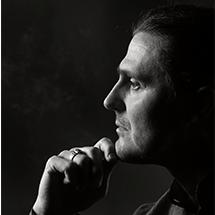It is important to note that the way the questions are asked by the consultant is not mechanic or abstract. He passes them through his own feelings, taking into account the specific situation and personality characteristics of the client, and in the same manner double-checks the answers received from him.
In addition to the opportunity for the consultant to double-check the received answers against his inner feelings, the interview process also includes a self-correction mechanism: even if the client makes a mistake in answering a question, the further course of the diagnosis will seek to compensate for it.
STAGE 2. DIAGNOSTICS
Comparison of the identified levels for all three matrices gives a clear idea of the client's current state: to which extend he is focused or, on the contrary, scattered in his attention and energy flows between the three realities of his life, what he thinks about the question before him, what inner power prompts him to action, and with the help of what functional level he tries to solve it in practice.
For the correct diagnosis of the client's condition, the consultant must also lead the interview results through his own feelings, as he did with the questions.
STAGE 3. RECOMMENDATIONS
The consultant describes the current state of the client to him, points out the problem area and gives a recommendation for that particular functional level at which the client should optimally focus his thoughts, volitional impulses and actions to resolve the issue facing him.
Focusing on a single level will help the client to overcome his “getting stuck” in the situation and help him move to a new level of capabilities and resources.
ALTERNATIVE APPROACH
Working with the matrices is a process of interaction with the main forces that shape the client's life, and does not depend on the personal opinion of the consultant. This makes an alternative use of the matrices possible, implying not a subtle sensory perception of the matrix, but a neutral reading of questions and recommendations to the client. At the same time, the consultant does not include his own processes of feeling and understanding, but completely leaves it to the responsibility of the client himself.
When choosing this alternative method of counselling, it is important to maintain a clean approach — not to combine it with the rational one. When choosing which of the ways to use, the consultant needs to be creative; if he uses both, he should start with the alternate, “detached” approach then apply the rational one.
PROFESSIONAL TRAINING
Matrices are a subjective pranic instrument, therefore the quality of consultation depends on the confidence of the consultant both in the instrument itself and in his own ability to perceive subtle sensations. From this point of view, contact with a more experienced colleague is indispensable. The mastering of the method occurs through the direct transfer of knowledge and experience from a practicing trainer-consultant. After the initial training, the consultant can start independent work, referring to his trainer for recommendations if he feels necessary.
Along with this prerequisite, the following recommendations must be mentioned:
1. The consultant must go through the questions and elements of the matrix in advance and experience them with his senses. The mastering of the matrices by the consultant must be carried out, starting with the minimal division into two in the outer reality.
2. Increasing the consultant's sensitivity to subtle bodily sensations is achieved quite quickly, the most important thing here is to overcome the primary distrust in them.
3. With practice, the consultant learns to perceive the difference between the density of prana in different parts of his body.
4. It is perfectly acceptable for the consultant to check the exact wording of the questions in the online program or his notes. For an effective interview, the intonation in the voice of the consultant and his comments adapted to a specific request are important. Whether the client is able to feel and understand the questions or not depends on his tone — either lively or mechanical.
PRACTICAL APPLICATION
CLIENT REQUIREMENTS
For effective work, the method presents the following requirements for the client:
1. Sufficient age — the method is not suitable for work with young children.
2. Willingness, openness and involvement in the process.
3. The absence of extreme imbalance, which would prevent the client from perceiving the questions of the consultant and the subtle reactions of his own body.
4. No obsession, alcohol or drug addiction, depression, gambling addiction and the like.

The potential of any individual is naturally concealed from him or her. Will our potential develop fully, or partially? Will it develop in a standard way, or will it take a very personal pattern?

Raja Yoga and LiveDevice indicate the natural ascending levels of human development and should not contradict each other. We check their mutual correspondence.

On the basis of what systemic measures, or principles, could the concepts of continuous education and lifelong personal development be built?
